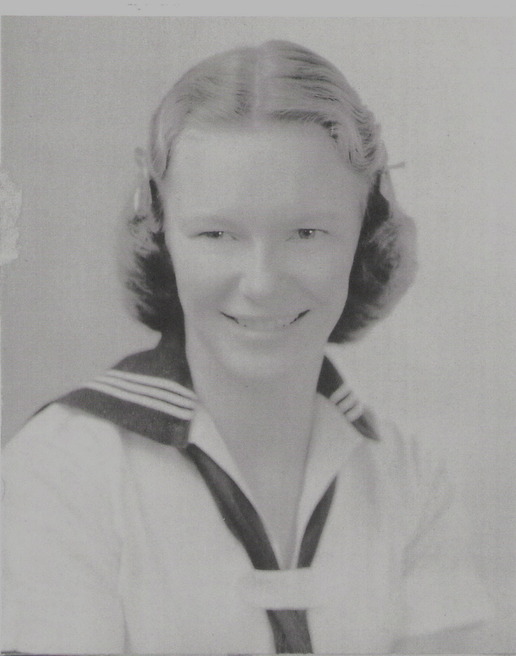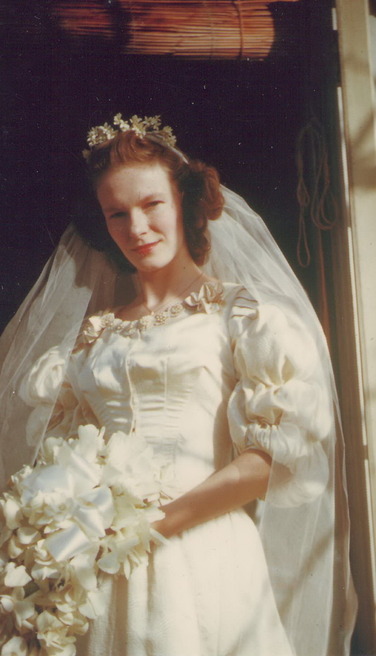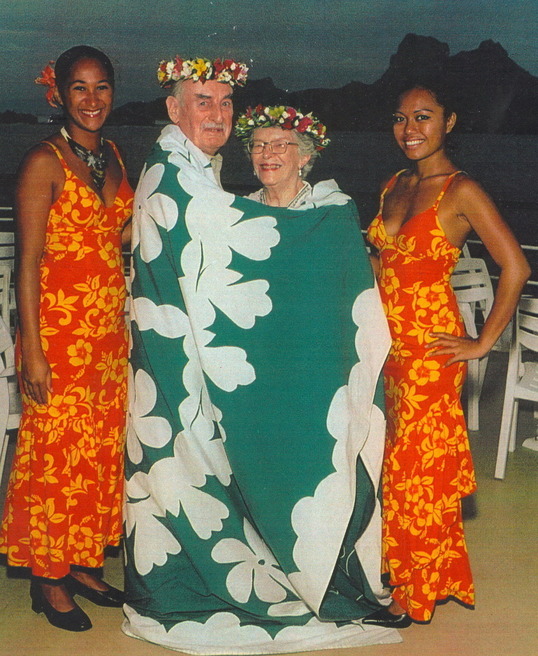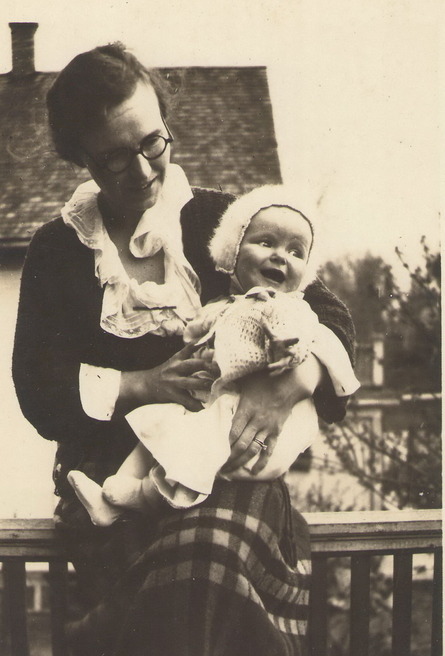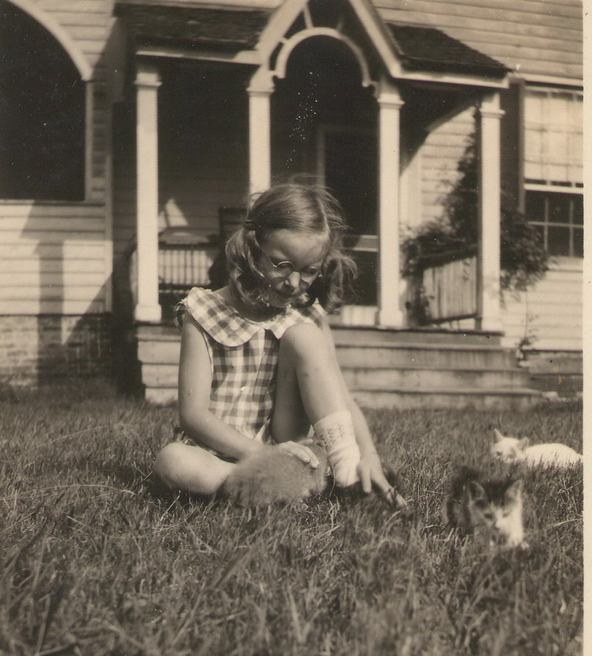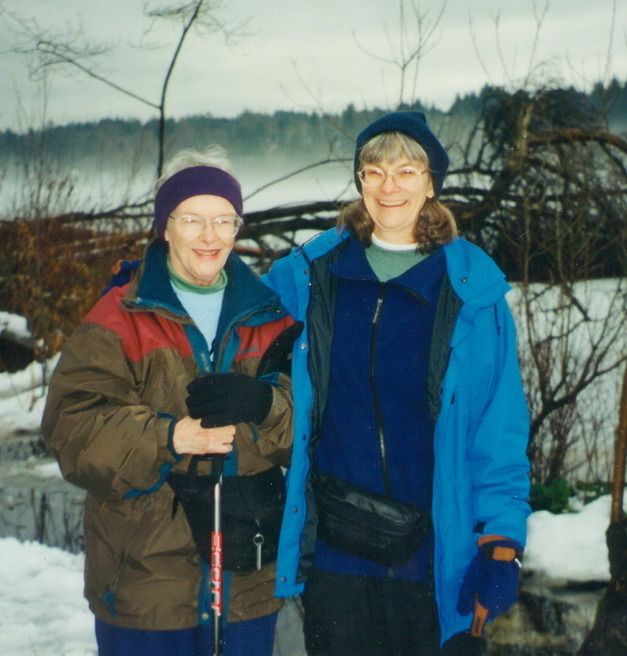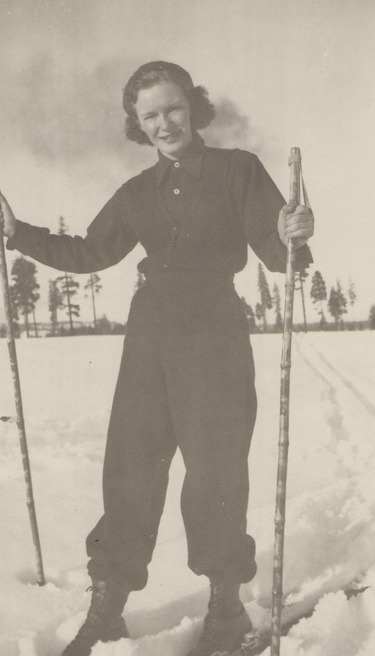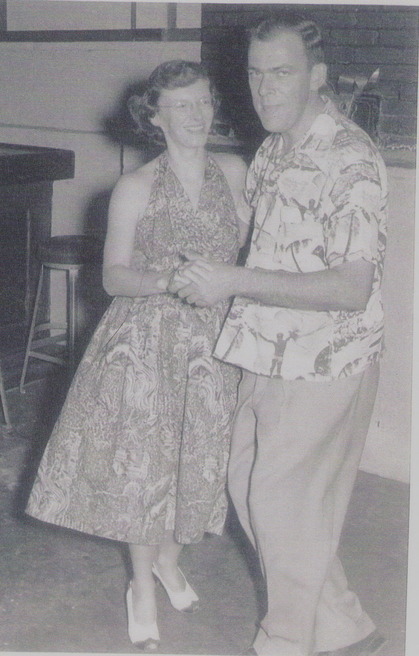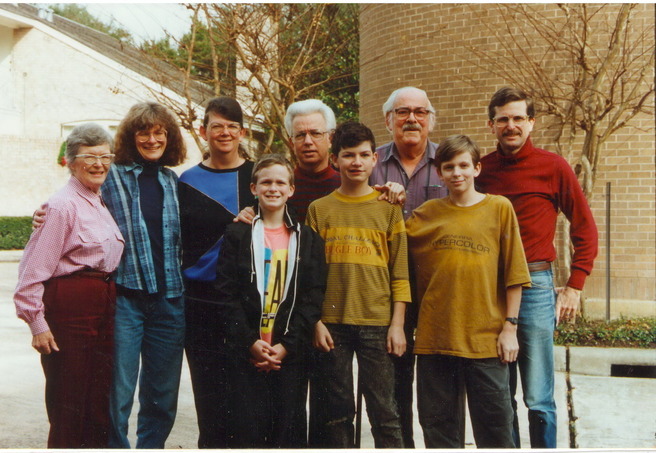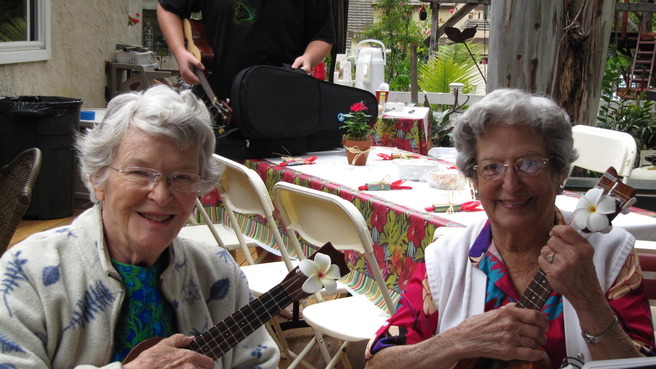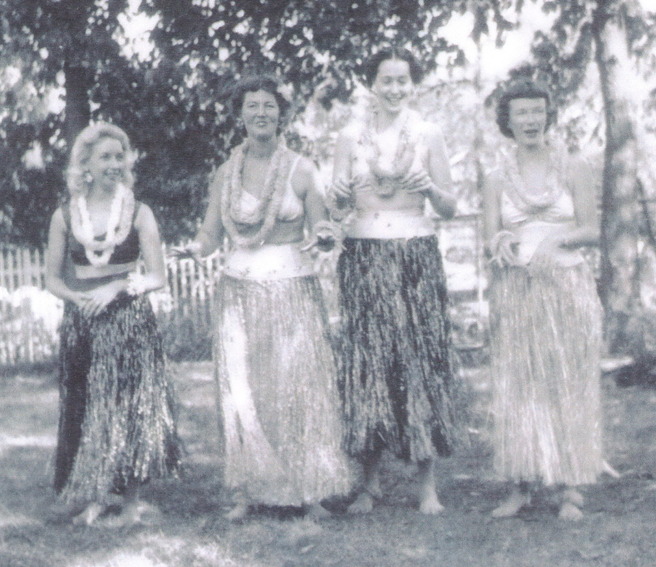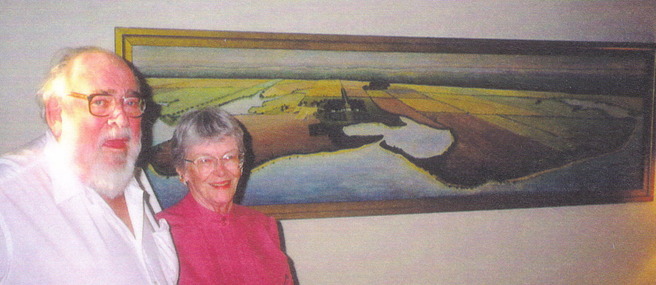We are not a blended family, but in fact Kit’s dad, Robert Vernon Williamson, was married three times. Here are brief stories of Grandaddy’s three wives -- all, in varied existential ways, mothers to Kit.
Kit’s own mother, Catharine Fletcher Williamson, descended from an old Maryland Eastern Shore family, which owned and operated the plantation “Perry Hall” in Talbot county. Despite her blue blood and her father’s belief that women should not attend college, Grandmother Williamson graduated from university and worked for a time as a chemist before her marriage to Grandaddy in 1920. Cathy and I never knew her, because she died unexpectedly in 1946 at the age of 50, after a hysterectomy. In those days, surgical patients were kept strictly in bed, and she developed fatal pneumonia as a result. Kit, busy with baby Cathy at the time, didn’t even know her mother was to have surgery, and she was severely shocked and grief-stricken by this loss. Even late in life, Kit would choke up when she spoke of her mother’s sudden death.
Though our Williamson grandparents were prosperous and happily married, all the photos we have of Grandmother Williamson portray her with a serious, even dour, expression. Kit resembled her mother in many ways and they shared many interests, but clearly she did not inherit her beautiful smile from Grandmother Williamson.
Grandaddy did not thrive on his own and was married again in 1948 to Helen Banta, a long-time friend of the family. “Dobbie”, as we called her, was therefore the grandmother Cathy and I knew and loved on our mother’s side. The only times I remember her being stern with us were when she had to shoo us away from Grandaddy’s huge collection of WWI gas masks, ordnance, and other military souvenirs. Needless to say, these items were irresistible, though frightening, for us little girls.
Dobbie was gracious, attractive, and always elegant in dress and bearing. Kit was very fond of her. The only difference of opinion that I ever heard of between them occurred when Kit brought Cathy and me as very young children, to visit her father and stepmother in Peoria, in 1950 or so. The train ride from California involved several nights in a small compartment with two feisty little preschoolers.. When Kit gratefully dragged us off the train in Peoria, the first thing Dobbie said to her was “Kitty, where on earth are your hat and gloves? Surely you didn’t travel dressed like that?”
In the early 1930s, when Kit was 11 or 12 years old, she and her parents visited Grandaddy’s family in Benton County, Oregon. While they were there, mother and daughter had an appointment at the beauty salon. When Grandmother Williamson announced her name as “Mrs. Robert Williamson” to the hairdresser, she was approached by an older customer, a complete stranger. “Are you Mrs. Robert Vernon Williamson, by any chance?” When told the affirmative, the older woman’s eyes filled with tears. “I’ve wanted to meet you ever since I heard that Robert had married again. He was my son-in-law, and I’ve always wondered how things turned out for him.”
Grandma Williamson was flabbergasted. Grandaddy had never told her of his first marriage. She now discovered that, in February 1910, while living in Portland, he had married a young woman named Juanita Davis. Six months later, in the summer of 1910, he lost her to appendicitis. She was 21 years old. He had waited ten years to marry again.
At the time of that chance meeting in the early 1930s, Juanita had been dead for over twenty years. But Mrs. Davis continued to remember and mourn for her. In 1956, Grandaddy died and Kit had to go through his belongings quickly as she helped Dobbie clean out their big Peoria house. In the middle of all the kerfuffle, a letter arrived from Mrs. Davis – “Dear Catharine, I am sorry to hear you have lost your father. If you come across any photos of my daughter Juanita as you go through his things, could you please send them to me?” Kit didn’t know how to respond. She remembered the meeting with Mrs. Davis, but she had been only a child at the time and had no idea how to recognize Juanita in a photo. Anyway there were hundreds of photos and no time to go through them all. So she just packed up the albums in boxes and took them home.
Forty years later, in the late 1990s, Kit finally found an occasion to look through the photos of her father’s early adult years. He had been quite the ladies’ man; the images showed him surrounded by friends, and a lot of them were female. Nonetheless, Kit noticed that one pretty, dark-haired young woman appeared more often than the others, and then there were some photos of just that girl and Grandaddy at his house, looking pleased with themselves. Kit realized she was looking at pictures of Juanita. Stylishly dressed in the long hobble-skirt and wide hat of the period, her dark eyes and direct gaze revealed a charming mixture of mischief and gravity. This was the girl her father had loved so, whose mother had still mourned and longed for any remembrance of her, 46 years after her death. If only Kit had looked at the pictures forty years earlier – but it was far too late now for her discovery to comfort Mrs. Davis.
Juanita Davis Williamson died 100 years ago this summer. And, imponderably, we – Kit, Cathy and I, and our descendants -- owe our existence to her tragic death, because we would not be here if she had lived.
For me, Dobbie, the grandmother I knew, is a warm, contented summer day. Grandmother Williamson, the grandmother I never knew, is a dream, always a bit out of focus. And Juanita is déjà vu, someone else’s stabbingly intense memory, mysteriously now my own via Kit’s experience. May Juanita too be remembered.


